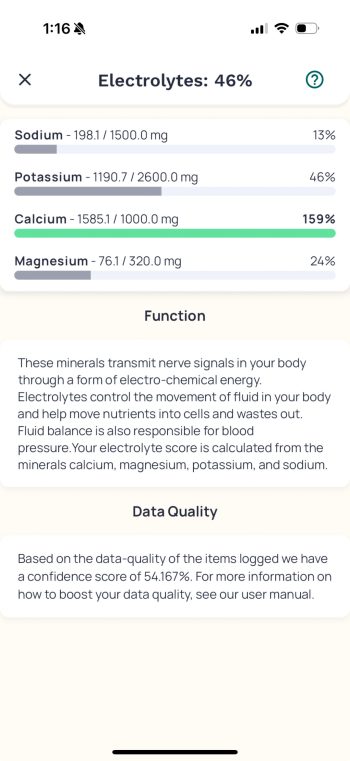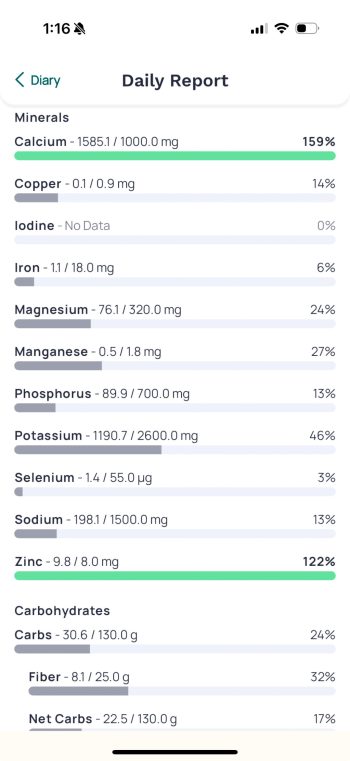Is it just us or has the word electrolyte been buzzing around for quite some time? A buzz word, you might say. Most of us know about ’em but do we actually know what they are and why we need them? Read on below to find out the nitty gritty details about this group of minerals.
What Are Electrolytes?
Electrolytes are a group of minerals which include calcium, magnesium, potassium and sodium.
What Do They Do?
These minerals transmit nerve signals in your body through a form of electro-chemical energy. That means they have a positive or negative charge when dissolved in water and can conduct electricity in that state.
Your cells use electrolytes to conduct electrical charges, allowing your muscles to contract. Those same electrical charges also help with chemical reactions, especially when it comes to hydration and the balance of fluids inside and outside of cells. (1)
Electrolytes control the movement of fluid in your body and help move nutrients into your cells and waste out of your cells. Fluid balance is also responsible for blood pressure.
Why Are They Important?
Sodium
Sodium helps transport other nutrients into the cell, helps with muscle contraction and helps to send signals through nerves. Most of the sodium in our diet comes from store bought packaged foods as well as meals purchased from restaurants. Bread products, cold cuts and cured meats, savory snacks like chips, pretzels and crackers, and cheese contribute the most sodium to our diets on average in the processed and packaged food category.
Magnesium
This mineral plays an important role in assisting enzymes to carry out various chemical reactions in the body such as building proteins and strong bones, and regulating blood sugar, blood pressure, and muscle and nerve functions. Magnesium is also required for energy production (2). Magnesium sources include spinach, lima beans, pumpkin seeds and soybeans.
Potassium
This mineral helps maintain fluid balance, aids in muscle contractions and helps to transmit signals through nerves. It is also used to maintain a steady heartbeat. Potassium and sodium are closely linked in the body. If you are low in potassium, your body will hold onto both potassium and sodium ions so you may want to keep an eye on your potassium:sodium nutrient balance, available to our Gold subscribers. Potassium sources include green leafy vegetables, milk, potatoes, fruit and coffee.
Calcium
Calcium is the most abundant mineral in your body. It helps grow healthy bones early in life and minimizes bone loss later in life. Calcium is used when muscles contract, in blood clotting and to send signals from your brain to tissues in your body. Calcium sources include tofu, spinach and dairy products.

Electrolytes & Your Diet
Typically, eating foods throughout the day is enough to keep your electrolyte levels in check. However, if you’ve done a particularly long and hard work out (over 2 hours) or you have sweat a lot, consider using electrolyte supplements to balance your blood sodium levels as you rehydrate.
Electrolyte drinks, gels and powders can also help you replenish electrolytes if you’re dehydrated after an illness causing vomiting or diarrhea.
Tracking Electrolytes With Cronometer
All Cronometer users have access to track the above mentioned electrolytes individually in the minerals section of their Daily Report.
Cronometer Gold subscribers also have access to an electrolyte Nutrition Score, which provides one overall score for how well (or not well) you’re hitting your electrolyte targets. Not a Gold subscriber but want access to our Nutrition Scores? Upgrade today.


Dietary Reference Intakes (DRI) vs. Adequate Intake (AI) vs. Upper Limit (UL)
While the dietary recommendations for calcium and magnesium are well grounded in research, both sodium and potassium do not have the same level of evidence in the Dietary Reference Intakes.
Researchers have yet been unable to determine levels of potassium and sodium that are required to prevent symptoms of deficiency directly. Instead, they reviewed national food intake surveys from USA and Canada to establish an adequate intake (AI) value for potassium. An AI is defined as the amount of a nutrient that is assumed to meet the needs of a healthy person without hypertension or cardiovascular disease.
One drawback of these surveys is that they use self-reported food intake to estimate nutrient intake. There are well-documented issues with under-reporting food intake for these types of surveys. Therefore, they selected the highest median potassium intake from these surveys on which to base the AI target.
The median population intake of sodium is about 3200 mg per day. However, studies have shown benefits from decreasing sodium intake from this level on reducing the risks of cardiovascular disease and high blood pressure. The AI for sodium was based on the best designed studies of sodium balance they could find. These studies are largely based on the DASH (Dietary Approaches to Stop Hypertension) diet. Limiting sodium intake is one part of the DASH diet and does not represent the average American diet. However, they have demonstrated benefits for reducing the risk of high blood pressure and are considered the best studies on which to base the sodium AI.
Researchers have not determined a level of potassium or sodium that poses a risk for toxicity symptoms, so there is no tolerable upper limit (UL) set for these nutrients. Due to the benefits of reducing sodium on cardiovascular disease risk, there is a Chronic Disease Risk Reduction (CDRR) intake level set. CDRR levels are a newer metric in the dietary guidelines that reflect a shift in looking at nutrients as merely preventing deficiencies to a broader approach to optimizing health over our lifetime.



